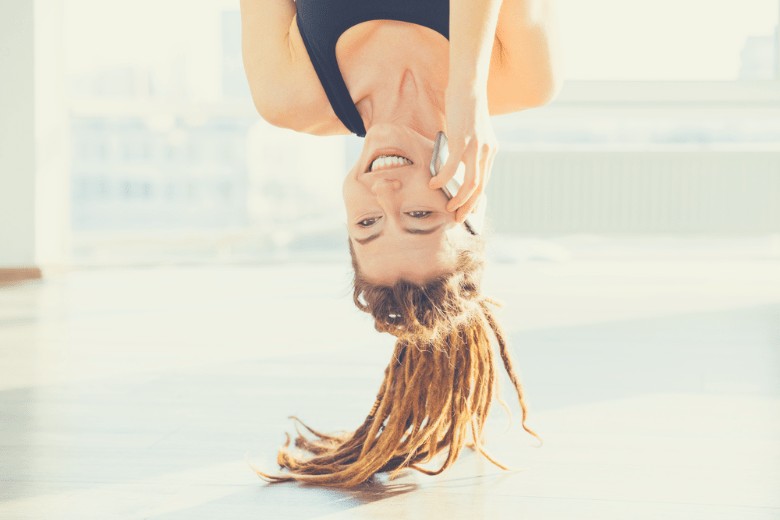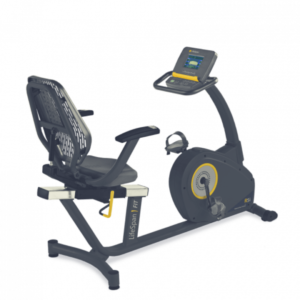After being rear-ended at a red light, I had searing back pain that came and went.
It was like a hot rod that ran up the entire length of my back on one side. I tried everything, but not even going to bed earlier brought any relief.
It turned out to be nerve damage, threatening a potential lifetime of being on pain medications. I’d almost given up. Then, I discovered inversion training.
> > Need an Inversion Table Recommendation? Here’s our favorite. < <
What’s Inversion Training Like?
If you’ve never been on an inversion table before, you’re in for a real treat.
Not only does it feel like a fantastic breath of fresh air for your whole body, but the benefits are immense if you practice correctly.
And, best of all, even though it’s a form of training, it doesn’t even feel like work.
A Little History…
There is documentation that the idea of inversion therapy was used to alleviate pain through gravity as long as 3,000 years ago, and possibly even further back.
The first known inversion table is documented at 400 BC, when ancient Greek physician Hippocrates devised a somewhat crude precursor to take advantage of gravity to alleviate a patient’s pain.
His approach was to tie the patient to a ladder, hung from the ceiling, and let him hang upside down on it for an unprescribed amount of time…but please, don’t try this at home.
Just before inversion tables hit the markets, people were using something called “gravity boots.”
People would hang in them from a metal bar at the top of a doorway.
Benefits of Inversion Therapy

A few benefits of inversion therapy include:
- targets tightness, imbalances and misalignments
- alleviates pain
- heals injury
- improves circulation
- leaves you with a sense of well-being
- straightens and realigns the spine
- helping your hair to grow stronger and faster
- improving brain function
- possibly improving your hearing and/or vision
- lowering cortisol levels
- increasing flexibility.
The really great news is that it also very effectively moves lymph, which goes everywhere throughout your body bathing the tissues in oxygenation, bringing nutrients to the cells and carrying away cellular waste products for elimination.
Often, these waste products accumulate in the tissues when they can’t get out, building up inflammatory acidic compounds like lactic acid and triggering more and more extreme cascades of readjustments that the body goes through in its attempts to keep itself stable and balanced.
These issues often come out of compression issues, which develop from tissue changes that occur because of chronic movement patterns used over a lifetime of living within the forces of gravity.
The beauty of inversion therapy is that it uses gravity to reverse its own effects: the effects of gravitational forces. Anything that uses the forces of gravity to force gravity to ‘fess up is all right by me.
You will immediately feel how inversion training decompresses and realigns your spine.
As this happens, it frees up the entrapped efferent nerves that send signals from the spinal cord to your muscles, simultaneously freeing up the afferent nerves that carry signals back from your sensory apparatus to the spinal cord.
When these nerves are free of compression and entrapment, muscle movement, balance and coordination improve.
Can Anybody Benefit From Inversion Therapy?
Not everybody will benefit equally, or sometimes even at all, from being on an inversion table.
However, inversion training is a lot of fun, safe and very therapeutic for most people if you follow the proper procedures and use good equipment.
Some people, though, never go beyond a 15- or 30-degree angle, and they get all the benefits over time. You have to make your own judgment call here.
The following conditions may make inversion training too risky if you have the following:
- abnormal blood pressure levels
- heart disease
- history of stroke
- obesity
- hernia
- detached retina or history of glaucoma
- vertebral fusion
- broken bones
- Osteoporosis
- pregnant
> > Need an Inversion Table Recommendation? Here’s our favorite. < <
The Technique
The whole technique of putting yourself into inversion is surprisingly simple.
The first time you stand on an inversion table with your ankles firmly but comfortably strapped in, leaning against the bed, you’ll probably be wondering: OK, what do I do now? It’s an “aha” moment that leaves you wondering: Is that all there is to it?
Once you’re ready to go, just rest back against the bed and bring one of both of your hands up toward your head.
That’s all there is to it. The table will swing backward and you will start to feel how the table immediately responds to your motions.
This is how you control the degree of slant through arm and hand movements, nothing more.
Not to worry: the table will go only as far as the [“leash”] you previously set will allow.
From The Body’s Perspective, What’s Happening?

Some questions to ask yourself as you progress from your first inversion therapy session are:
- What are you feeling during your session?
- Do you feel OK, standing and walking around the room for a few minutes afterward?
- How do you feel later that night, and the next day?
- Did your settings feel right?
- … and most of all …
- Do you anticipate getting back on the table with glee?
Inverting at lesser angles helps to reduce blood pressure by allowing gravity to assist the venous blood flow toward the heart.
Prerequisites For Inversion Therapy
Before you get on the table, you need to do these things:
- Check with your doctor
- Arrange to have a spotter present throughout your first inversion
- Give yourself some time after eating to make sure your digestive system won’t be taking priority away from you getting to relax and rejuvenate your whole system
- Try to come to the table already hydrated. A glass of water half-an-hour before a session will help your body as it makes its adjustments to the inversion.
- Invert in a quiet place if at all possible. If not, it’s always OK to just work with what you have.
How to Correctly Use an Inversion Table
The whole idea is for you to be comfortable while you’re on the table. Nothing should hurt or create anxiety.
As with any kind of training, you’ll get the most benefits if you practice slowly and consistently.
Most good results come from using the table consistently.
Daily for two or three minutes the first few sessions will be plenty. This way, you’ll allow your system to make the connections, and your brain to create the neural pathways that allow it to recognize this as a normal and safe new pattern.
Once you get past the initial period where your brain and body are focused on trying to protect you from threats, you will start experiencing the benefits.
For some people, this is right away, and for others it may take a little longer.
Once your brain has established the inversion pathways, you won’t find yourself tensing up and missing the fantastic feeling you get when everything starts decompressing and the circulation starts to flow, sometimes to places that haven’t received enough oxygen and nutrients for a long time.
Always start off slowly and use the same settings every day until you feel like you’re ready to move on to higher settings. For the first week, you may want to start off at 15 to 30 degrees at 2 to 3 minutes a day for the first week.
You’ll always be able to tell if your settings are working for you by the way you feel:
- while you’re on the table
- immediately after your inversion session
- the following day
You should be aiming for a gentle back stretch. For some people, just going horizontal feels great.
On a table, it feels different than lying on a bed because the table gives a floating sensation as it responds to movements as small as your breathing.
Most people are fine just starting out at a 15-degree slant for the first few sessions. You’ll know when it’s time to go to the next level by the way it feels.
The key is, to remember to start slowly and increase the angle and time gradually, always staying within your comfort zone.
Although some people go all the way to 180 degrees, it really isn’t necessary to do that in order to get the full benefits of inversion training.
Most people find that 60 degrees is a good maximum. Anything much farther beyond that will cause those changes in blood pressure that we talked about earlier.
Should You Exercise While on an Inversion Table?
Some people exercise while hanging upside down. There are good reasons for doing so, and equally good reasons to avoid it.
First, when you exercise you will find that the increased blood circulation gives you a feeling of greater flexibility and more energy, so you’ll feel as if you can accomplish more without injuring yourself.
If you do choose to try a few twists and situps, pay close attention to how you’re feeling and stop if you begin to feel the slightest discomfort.
While it may seem small at this point, these things can feel much bigger a few hours later.
Monitoring your body after a session is always a good idea for this reason. The information will help you know how to adjust your sessions in the future.
Part of what makes that so important is that your connective tissues have thixotropic properties.
This means that under gentle, steady, and sustained tension, the state of the ground substance that makes up your tissues becomes more malleable.
Typically, it takes between 90 and 120 seconds of this steady pressure for the change in state to begin to occur.
Once it happens, the fibers in your connective tissue begin to realign along the line of force – much like your spine does under the traction of inversion training.
When you hold your stretch position past that point, you will feel your flexibility and range of motion begin to increase as your tissue releases.
When this happens, you are creating space in the tissues for the lymph fluids to circulate in and out of your joints, between your muscle fibers and the spaces between your cells.
This feels like a great relief, especially when constricted and compacted areas begin to open up, get cleared out, and rejuvenated with fresh lymph and nutrients for the cells.
A study done in 2012 established a link between eliminating the need for lumbar surgery and the use of inversion therapy. 77% of patients studied who had been decompressing their spines on inversion tables no longer needed surgery.
By comparison, only 22% who did not use the tables managed to get out of having surgery.
Balance and spatial orientation become sharper under inversion because it stimulates the inner ear.
Table Adjustments
First, you should always check the quality of construction before getting onto an inversion table.
One thing to look for is whether the frame is made of heavy-duty steel. One thing you absolutely never want to do is just get on one of these tables and start inverting because of the potential for serious injury.
The height adjustment mechanism is also something you need to consider. Make sure first of all that the table is set up for your height.
Then, you will need to locate your own center of gravity so you will be positioned properly for the table to be able to swing freely while you’re on it.
Women tend to have a lower center of gravity than men. Your center of gravity generally stays close to the middle of the table, at the point where the table pivots as it changes angle.
Once you’ve set the height, you need to set the strap “brake” that will prevent you from inverting any further. You can set the strap to stop the table wherever you feel comfortable stopping.
Final Thoughts
Inversion training is one of the best things you can do to improve your health.
If you just treat this practice with the respect it deserves, it will reward you with increased energy, better circulation and flexibility and help you avoid a whole host of issues later on down the road.
> > Need an Inversion Table Recommendation? Here’s our favorite. < <



